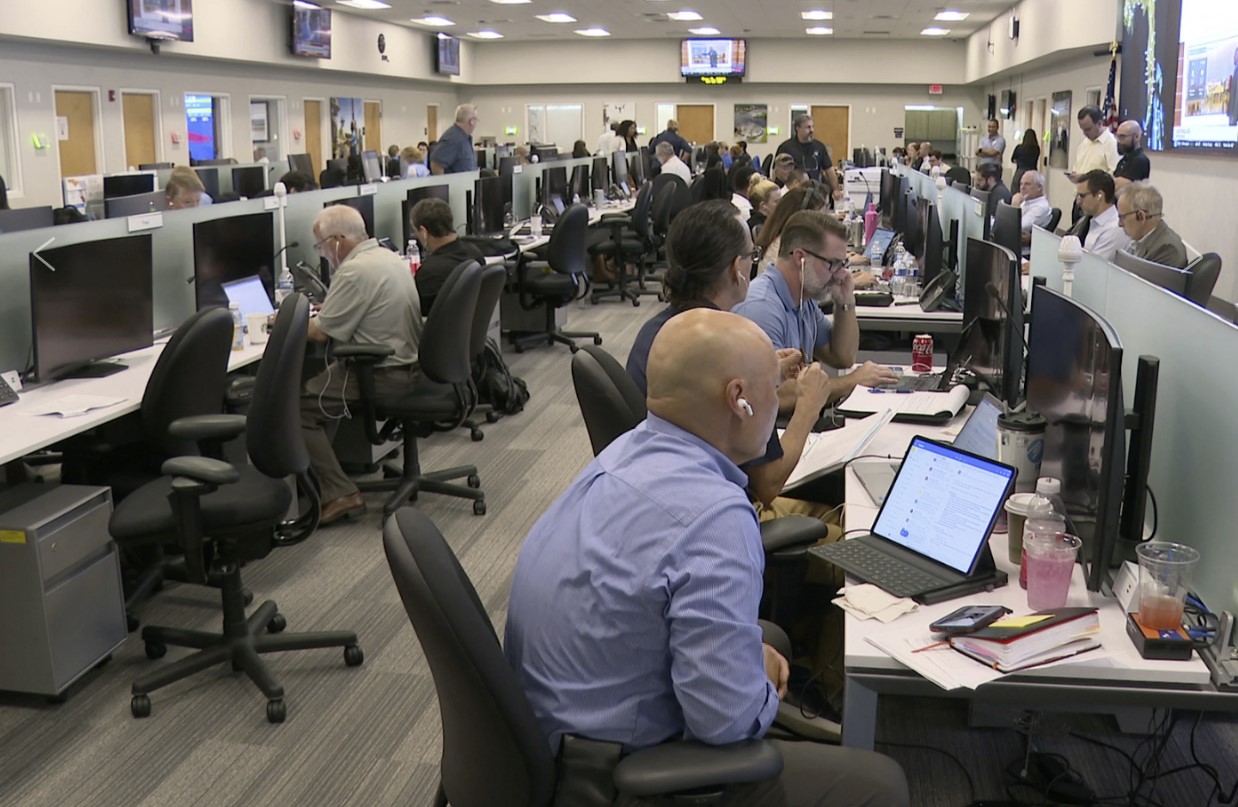
Under blue skies, officials at Florida’s largest power company dealt Thursday with the aftermath of a major hurricane that slammed into Miami and Fort Lauderdale — or a pretend one, anyway.
Florida Power & Light is conducting its annual mock hurricane drill this week, simulating how it would respond if a hurricane struck the state and devastated the power grid. Hurricane Benito, with 135 mph (215 kph) winds, did not really hit on Wednesday, but it was imagined to be even stronger than real hurricanes Idalia and Ian, which seriously damaged portions of the state over the past two years.
Ian was one of the worst disasters ever to strike Florida, killing 150 people as it hit the Gulf Coast near Fort Myers in 2022, leaving millions without power. If Benito were a real storm, it likely would cause worse damage, as its imaginary path took it over the state’s most-populated area.
FPL’s territory covers almost Florida’s entire Atlantic Coast, much of its Gulf Coast south of Tampa and the far western Panhandle, where about 12 million people, or 55% of the population, reside.
“Every day we don’t have a storm is a day we are preparing for one,” said Ed DeVarona, FPL’s Vice President of Power Delivery.
The National Hurricane Center is predicting the upcoming Atlantic and Gulf season, which runs from June 1 to Nov. 30, will exceed the yearly average of seven tropical storms and seven hurricanes, and that three of the storms will be major. Not all hurricanes make landfall.
In Thursday’s drill, a computer simulated power outages. Crews working at FPL’s emergency operations center had to assess the fake damage and dispatch imaginary crews to make repairs.
FPL officials said making assessments has gotten easier over the past decade. Instead of relying on customers to report outages and then sending crews to drive through the area to pinpoint the damage, sensors now tell FPL immediately where there are blackouts and locate the cause. Drones are used to examine lines. These improvements lessen the time crews spend on each repair, meaning they can get more done in a day.
Also, more lines are underground and most above-ground wires are anchored by metal or concrete poles, not wood. That means fewer major repairs are needed.
“I can honestly say that each of these tools … make it easier for line workers like myself,” said Mike Ochoa, a senior line specialist.



